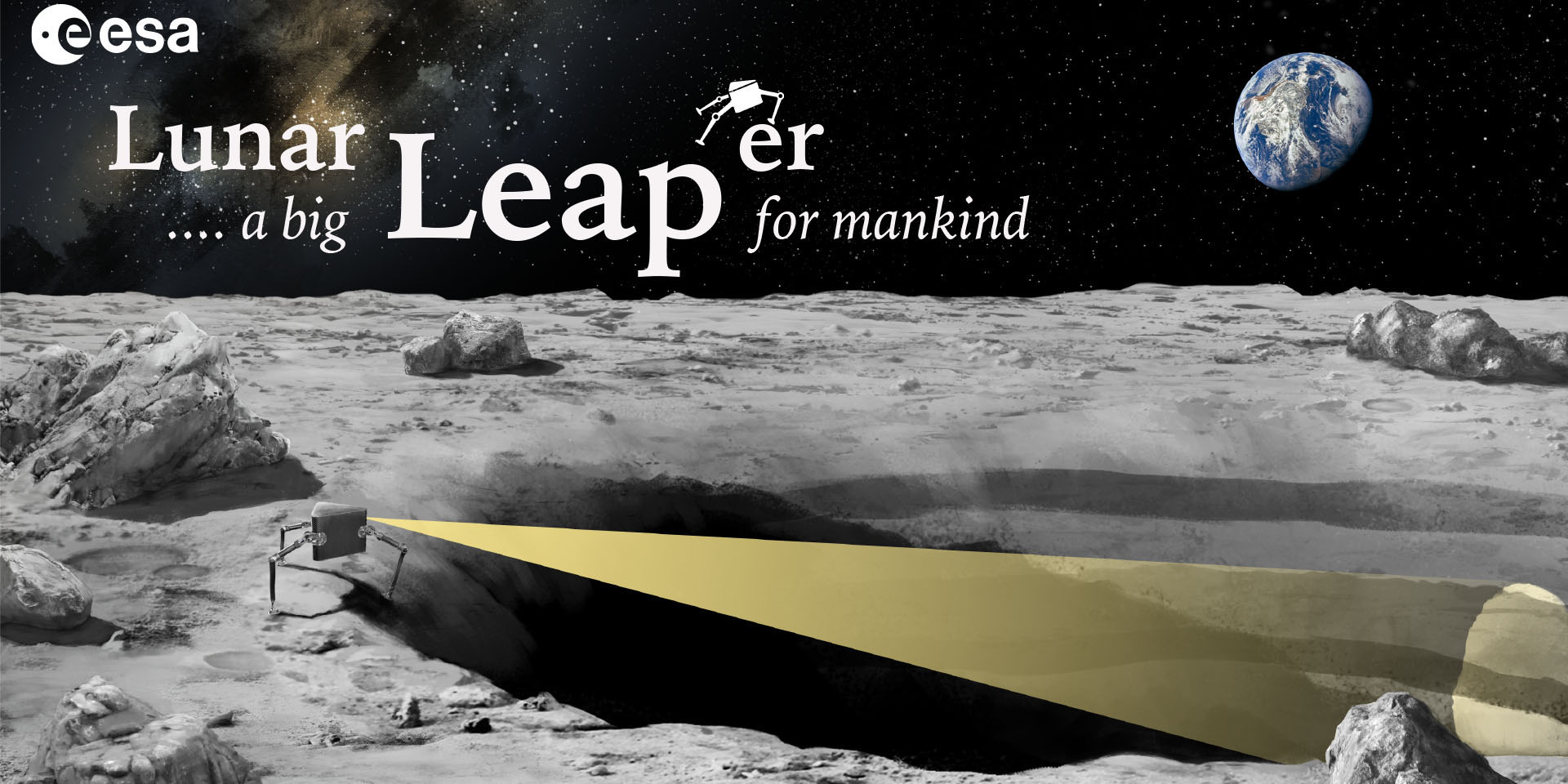LunarLeaper - a big leap for human mankind
Anna Mittelholz and Simon Stähler from the Department of Earth Sciences, together with Hendrik Kolvenbach from D-MAVT, are leading an international team that is proposing a cost-effective method for exploring lava tubes on the Moon.

Lunar pits, also referred to as skylights, are collapsed features found on the lunar surface. These formations potentially offer access to subsurface lava tube systems, which could serve as shelters for future human explorers over extended durations. Additionally, they serve as portals to the Moon’s ancient history, as they uniquely expose records detailing the size, timing, and composition of volcanic activity along their perimeters.
In this context the researchers present a pioneering mission: LunarLeaper is a 10kg-class three-legged robot designed by the Robotic Systems Lab at ETH Zurich. The mission is designed to explore the Moon's subsurface by approaching the Marius Hills pit—a skylight believed to connect to an underground cave system, situated in one of the Moon’s youngest and most enigmatic volcanic regions. State-of-the-art autonomous navigation capabilities allows LunarLeaper to navigate the challenging terrain surrounding the pit much more flexible than a wheeled rover and analyze the traversed landscape and its subsurface using a range of established geophysical methods and imaging technologies.
LunarLeaper aims to validate whether the pit indeed accesses the hypothesized cave system and assesses its potential suitability for human exploration and habitation. It will also address fundamental questions about the Moon's geological history, particularly volcanic activity over time through the uniquely accessible chronological sequence of lunar lava flows along the pit wall. Local observations around the pit in the context of orbital data allows for ground-truthing of hypotheses like that of the topographic rille being a void lava tube, possibly connected to more expansive caves.
Aligned with ESA’s Terrae Novae program, LunarLeaper embodies a European mission that ventures into uncharted territories with promising scientific and exploratory outcomes. Leveraging distinct European expertise, LunarLeaper relies on an innovative robotic platform with significant potential to revolutionize planetary exploration. As a landed mission, LunarLeaper will establish new strategic capabilities, setting a precedent for future European endeavors and contributing to the ongoing advancement of European lunar exploration, as outlined in ESA’s roadmap. Ultimately, LunarLeaper represents a gateway to Europe’s future endeavors in space.
The LunarLeaper mission is an ESA small mission candidate.
